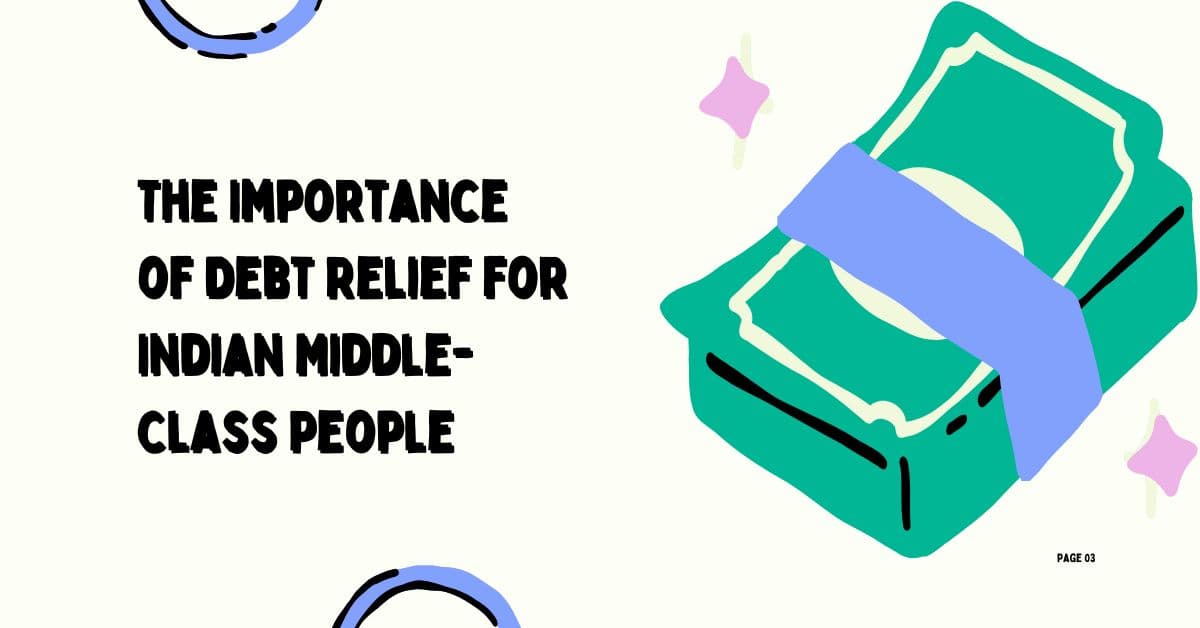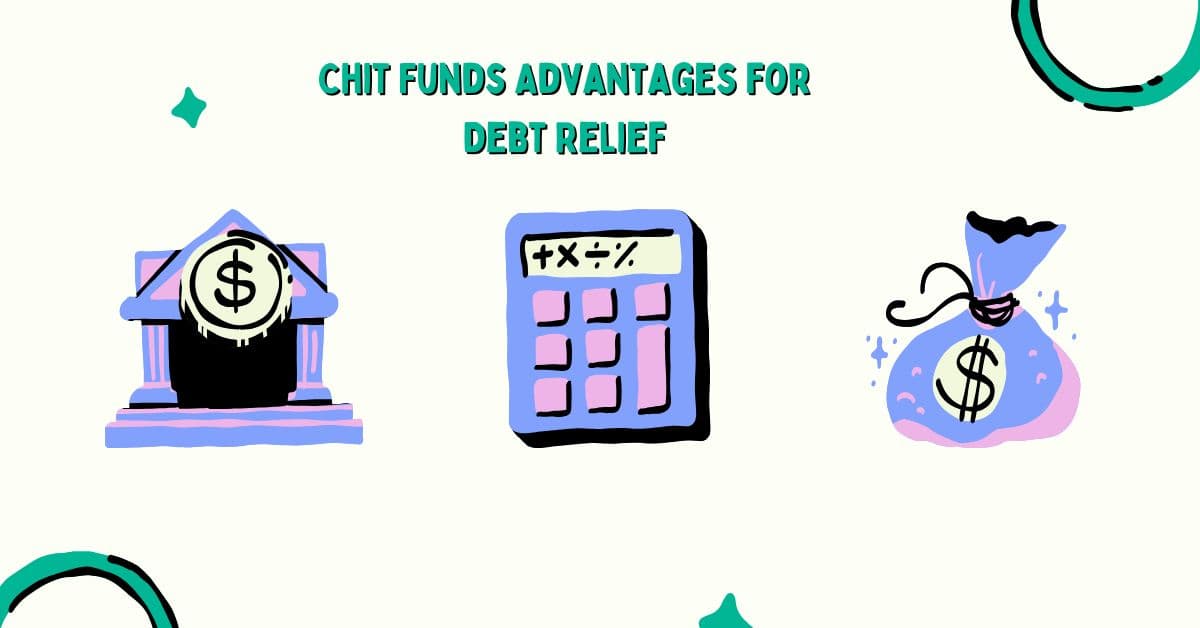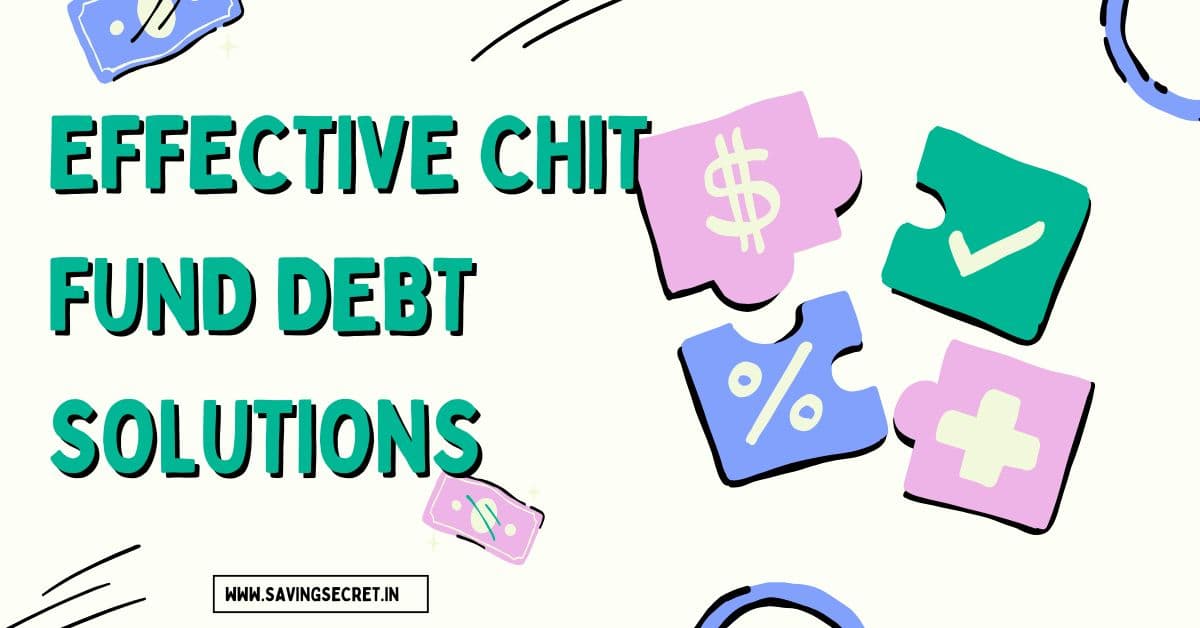Effective Chit Fund Debt Solutions: Managing debt is a daily reality for India’s middle class, which will number over 400 million by 2025. In Tier-2 towns like Patna or cities like Delhi or Mumbai, debt may put a burden on budgets, ranging from ₹5 lakh personal loans at 15% interest to ₹1 lakh credit card balances at 36% percent. Rent (₹12,000), food (₹10,000), and EMIs (₹15,000) frequently consume a monthly salary of ₹50,000, leaving little for emergencies or savings. A classic group savings plan, chit funds provide a special debt solution by combining savings with loan-like access to pay off expensive debts without having to deal with banks.
We will examine efficient chit fund debt solutions for Indian middle-class individuals, outlining their advantages, disadvantages, and doable procedures for using them to reduce debt. Chit money can be helpful whether you’re a teacher in Kolkata consolidating ₹3 lakh debts, a shopkeeper in Chennai dealing with ₹50,000 dues, or a salaried person in Bangalore paying off ₹2 lakh in debt. The moment to use this instrument is now, as India’s digital economy is expanding (UPI transactions reached 14.4 billion in February 2025) and regulated chit funds are increasing. Let’s explore how chit funds might assist you in effectively paying off debt, beginning right now!
The Importance of Debt Relief for Indian Middle-Class People
According to forecasts from 2024, India’s middle class spends ₹10 lakh crore, yet debt is becoming a bigger burden. According to RBI statistics from 2025, credit card debt increased by 30% annually to ₹2.5 lakh crore, while personal loans reached ₹50 lakh crore. Families are trapped by high interest rates, which consume half of a ₹40,000 wage with ₹20,000 EMIs on cards and 15% on loans. The cycle is made worse by cultural pressures (₹20,000 festivals, ₹50,000 weddings) and inflation of 5–6%. Chit funds provide assistance by:

- Reduced Costs: Get ₹1 lakh for 4-8% less than using 36% cards.
- Fast Funds: ₹50,000 in six months without any bank hold-ups.
- Flexibility: Make ₹5,000 a month or, if necessary, bid ₹80,000.
- Community Trust: 60% of middle-class savers choose community trust chits than loans.
- Debt Consolidation: Consolidate your debt by paying off ₹2 lakh in one single amount of ₹1.8 lakh.
Chit funds are a potent instrument for debt reduction, with an estimated ₹1 lakh crore managed in India by 2025. Let’s examine their operation and the reasons that make them perfect for the middle class.
Understanding Chit Funds for Debt Relief
What Are Chit Funds?
Members of chit funds, which are group savings plans, contribute a certain sum each month (for example, ₹5,000) to a pool. Through bidding or a lottery, one member wins the pool each month (without a charge), and others keep contributing until everyone has received their part. Chit funds function as a low-cost loan for debt relief; you may bid early for a lump sum of ₹80,000 to pay off debt and then return it with instalments of ₹5,000 each month.
Organisation:
- 10–50 people in the group (e.g., 20).
- Monthly contribution: ₹1,000 to ₹25,000.
- Monthly pool: ₹20,000 to ₹5 lakh.
- Duration: 12–50 months.
Providers: include SHGs, local organisations, and regulated businesses like Shriram Chits and Margadarsi.
For instance, 20 members contributing ₹5,000 a month for 20 months equals a pool of ₹1 lakh. In the first month, Anil bids ₹80,000 (plus a ₹20,000 group fee), pays off ₹80,000 in debt, and makes ₹5,000 monthly payments.
Why Debt Relief?
Low Cost: ₹80,000 at an effective rate of 4-8% as opposed to 36% on a credit card.
No Bank Hassle: Aadhaar, minimum documents—₹1 lakh in two days—no bank hassle.
Flexible Repayment: ₹10,000 EMI against ₹5,000 each month.
Middle-Class Fit: Contributions between ₹1,000 and ₹10,000 match earnings between ₹30,000 and ₹60,000.
Chit Fund Debt Solutions That Work: A Comprehensive Guide
This comprehensive guide is designed for middle-class Indians and includes 12 doable stages, advantages, hazards, and advice on using chit money for debt relief.

Step 1: Assessing Your Debt
- What to do: Make a list of your debts, including a ₹2 lakh personal loan (15%) and a ₹1 lakh credit card (36%).
- Why It Matters: Give high-cost debt priority. For example, ₹1 lakh at 36% costs ₹36,000 annually, but ₹15,000 at 15% does the same.
- In-depth: The total interest is ₹66,000 per year (₹1 lakh card + ₹2 lakh loan).
- For instance, Priya’s ₹80,000 credit card debt equals ₹28,800 in annual interest—the ultimate goal.
- Take action: by April 20, 2025, to list debts.
Step 2: Establish a Goal for Debt Relief
- What to Do: Aim for a lump payment of ₹2 lakh for loans and ₹80,000 for the card.
- Why It Works: It matches the amount of the chit—5,000 per month for 80,000 vs. 10,000 per month for 2 lakh.
- Tricks: Large debts (₹2 lakh) equate 20 months; little debts (₹50,000) mean short chits (10 months).
- For instance, Anil’s 1 lakh target is equal to a 5,000 monthly cheque.
- Action: By April 25, 2025, set a goal.
Step 3: Select an Approved Chit Fund
- What to Do: Under the Chit Funds Act of 1982, join organisations such as Margadarsi, Shriram Chits, or SHG-led chits.
- Why It Matters: Unregulated chits put you at danger of fraud—loss of ₹50,000 against gain of ₹80,000.
- Hacks: Check for RBI adherence— Shriram has more than 500 outlets and serves 2 million customers.
- For instance, Sunita’s Shriram ₹80,000 safe is equal to ₹5,000.
- Take action: by April 30, 2025, to verify the supplier.
Step 4: Sign Up for a Chit Club
What to Do: Sign up for a ₹1,000–₹10,000/month chit and provide evidence of address, Aadhaar, and PAN.
Actions to take:
- Make contact with the organiser (SHG, Shriram).
- Choose a tenure (for example, 20 months).
- Make your first payment (₹5,000 in cash or UPI).
Why It Works: ₹80,000 pays down ₹1 lakh in debt, while ₹5,000 covers ₹40,000 in salary.
For instance, in month eight, Anil joined with a ₹5,000 chit—₹80,000.
Engage by May 05, 2025.
Step 5: Begin with Contributions That Are Affordable
- Steps to take: Start with ₹1,000 to ₹5,000 each month, or 10% of your salary (₹40,000).
- How It Works: ₹2,000 a month equals ₹36,000 in ten months—a debt of ₹50,000 is paid off.
- In-depth: 20 months at ₹5,000 a month is ₹80,000—₹1 lakh card lost.
- For instance, Priya’s 2,000 cheque equals 36,000 for a debt of 40,000.
- Take action: By May 10, 2025, pay ₹1,000.
Step 6: Place an Early Debt Relief Bid
- What to Do: Use a lump payment to pay off debt and bid in months three and eight (₹80,000 vs. ₹1 lakh).
- Why It Matters: The Early Bid = ₹80,000 at 4-8% vs. 36% card—₹28,000 saved annually—is why it matters.
- Strategies: Make a modest bid of ₹80,000 and repay ₹5,000 every month to avoid EMI burden.
- For instance, in month six, Anil bid ₹80,000 and got a ₹80,000 card.
- Take action: by May 15, 2025, to plan your candidacy.
Step 7: Pay Off High-Cost Debt in One Go
- What to Do: Save ₹28,800 year by paying ₹80,000 to 36% credit card rather than 15% loan.
- Why It Works: ₹80,000 chit at 8% = ₹6,400; ₹1 lakh at 36% = ₹36,000 interest.
- Hacks: Save ₹20,000 by negotiating a card settlement of ₹80,000 instead of ₹1 lakh.
- For instance, Sunita saved ₹14,400 after her ₹36,000 chit cleared her ₹40,000 card.
- Take action: by May 20, 2025, to pay off debt.
Step 8: Handle Post-Bid Contributions
- What to Do: Treat as EMI and continue paying ₹5,000 each month after bidding.
- Why It Matters: a one-time payment of ₹80,000 equals ₹5,000 every month for 14 months—no default.
- Hacks: ₹2,000/month, auto-debit via UPI (PhonePe), no misses.
- Example: Priya’s UPI auto-pay, for instance, results in 0% missed payments.
- Take action: by May 25, 2025, to set UPI.
Step 9: Recognise taxes
- Steps to take: Declare ₹20,000 in chit dividends as income, subject to slab tax (20% = ₹4,000).
- Why It Matters: Prevent notifications—₹10,000 penalty vs. ₹5,000 tax.
- Tricks: Use ClearTax for your ITR if your income is less than ₹2.5 lakh.
- For instance, Anil’s dividend of ₹10,000 is equal to ₹2,000 in tax (20% slab).
- Action: By May 30, 2025, check the slab.
Step 10: Integrate with Additional Debt Management Techniques
- Action Items: Emergency money (₹10,000), balance transfer (15–12%), and chit (₹5,000).
- Why It Works: ₹1 lakh debt is paid off (₹80,000 chit + ₹20,000 transfer).
- Hacks: ₹1,000 RD at 6.7% = ₹12,000 annually—set aside money for donations.
- For instance, Sunita’s 2,000 cheque plus 1,000 RD equals 50,000 in debt.
- Take action: by June 05, 2025, by starting ₹500 RD.
Step 11: Reduce the Risks of Chit Funds
- What to Do: Verify organisers, restrict contributions (10% of ₹40,000 = ₹4,000), and stay away from unregulated chits.
- Why It Matters: Shriram returns ₹80,000, but fraud costs ₹50,000.
- Tricks: Check the RBI Sachet; SHG chits—98% payback compared to 80% local.
- For instance, the safe value of Priya’s Margadarsi chit is ₹80,000, but the local loss is ₹20,000.
- Take action: by May 10, 2025, to verify the chit.
Step 12: Develop Financial Self-Control
- What to Do: Watch YouTube videos (like those of CA Rachana Ranade) and participate in financial literacy courses (SHGs, NGOs).
- Why It Works: Fraud prevention saves ₹10,000, and smart bidding saves ₹80,000 instead of ₹70,000.
- Hacks: Learn chit rules in five minutes with the help of free applications like RBI Sachet.
- Example: Anil’s workshop, for instance, is worth ₹10,000 more thanks to clever offers.
- Take action: by May 15, 2025, by watching the instruction.
Chit Funds Advantages for Debt Relief

Chit funds are an effective strategy to manage and reduce debt in India. They help save a lot of money, such as ₹28,000 year on a ₹80,000 loan, because they have low interest rates (4–8%) compared to credit cards (up to 36%). Money is easily available, frequently within six months, and just Aadhaar is needed for documentation. Flexible monthly payments (e.g., ₹5,000/month versus ₹10,000 EMI) and debt consolidation are ideal since they allow you to pay off up to ₹1 lakh in outstanding debts in one go. Chit funds are a dependable choice for anyone looking for quick, simple, and reasonably priced debt relief.
Examples from Real Life
Relief from Anil’s Credit Card
Anil, a Mumbai resident aged 30 who earns ₹40,000 per month:
- Credit card debt: ₹1 lakh (36%).
- 20 months at a rate of ₹5,000 each month, with a bid of ₹80,000 in the sixth month.
- Savings: ₹28,000 year; debt paid off in 14 months.
- He claims, “Chits saved my budget.”
Priya’s Consolidation of Loans
Priya, a 35-year-old Chennai resident who makes ₹50,000 a month:
- Debt: 15% personal loan of ₹2 lakh.
- 20 months at a rate of ₹10,000 per month, with a bid of ₹1.8 lakh in the eighth month.
- Savings: ₹54,000 annually; debt paid off in a year.
- “No more stress from EMI,” she says.
Additional Advice for Indians in the Middle Class
- Make Debt Your Top Priority: Pay off 36% of your cards first—₹1 lakh saves ₹36,000 annually.
- Digital Ease: Pay ₹5,000 in five minutes with UPI (PhonePe).
- Little Chits: ₹18,000 for ₹20,000 in debt, or ₹1,000 every month.
- Verify Firms: Margadarsi, Shriram—safe, 2 million customers.
- Emergency fund: Two months’ worth of payments are covered by the ₹10,000 emergency fund savings.
- CIBIL Boost: Pay off debt, improve your credit (from 700 to 750), and get future loans at a lower cost.
- Learn: For the fundamentals of chits, check to YouTube (e.g., Labour Law Advisor).
Typical Problems and Their Solutions
- Problem: Fears of chit fraud.
Solution: Joining Shriram will save you ₹80,000 as opposed to losing ₹50,000. - Problem: High donations (₹10,000) present a challenge.
Solution: In ten months, start with ₹2,000 to ₹36,000. - Problem: Confusion in bidding is the challenge.
Solution: Offer ₹80,000 for the debt at an early bid (month 6). - Problem: Missed payments provide a challenge.
Solution: ₹5,000/month, no skips, UPI auto-debit. - Problem: Several debts provide a challenge.
Solution: ₹1.8 lakh chit—pay down ₹2 lakh in debts is the solution.
Why Middle-Class Debt Relief Is Possible with Chit Funds
The middle class is severely impacted by India’s loan market, which is around ₹90 lakh crore (2025):
- Cultural Fit: Group trust—60% of people would rather use chits than banknotes.
- Digital Shift: 70 million people may make 5-minute payments with UPI and apps.
- Economic Need: ₹5,000 solutions are needed for ₹40,000 incomes.
Resources and Tools
- Apps: include RBI Sachet (chit rules), ClearTax (tax), and PhonePe (UPI).
- Websites: RBI (regulations) and Shriram Chits (plans).
- Free resources: include YouTube lessons and BankBazaar debt calculators.
- Communities: Debt advice from r/IndiaInvestments.
Start Your Chit Fund Debt Solution Today
Pay off debt right away:
- Debts must be listed before April 20, 2025.
- Join by April 30, 2025, for ₹1,000.
- By May 05, 2026, pay off ₹50,000 in debt.
Your route to debt independence is chit funds. To inspire relief, distribute this guidance to loved ones. Every middle-class Indian may overcome debt using chit money!
Gold Loan vs Personal Loan: Which is Better for Debt Relief?
Loan Repayment Made Easy: Your Money Map
Refinancing Hacks for Low CIBIL Scores: Unlock Better Loan Terms

